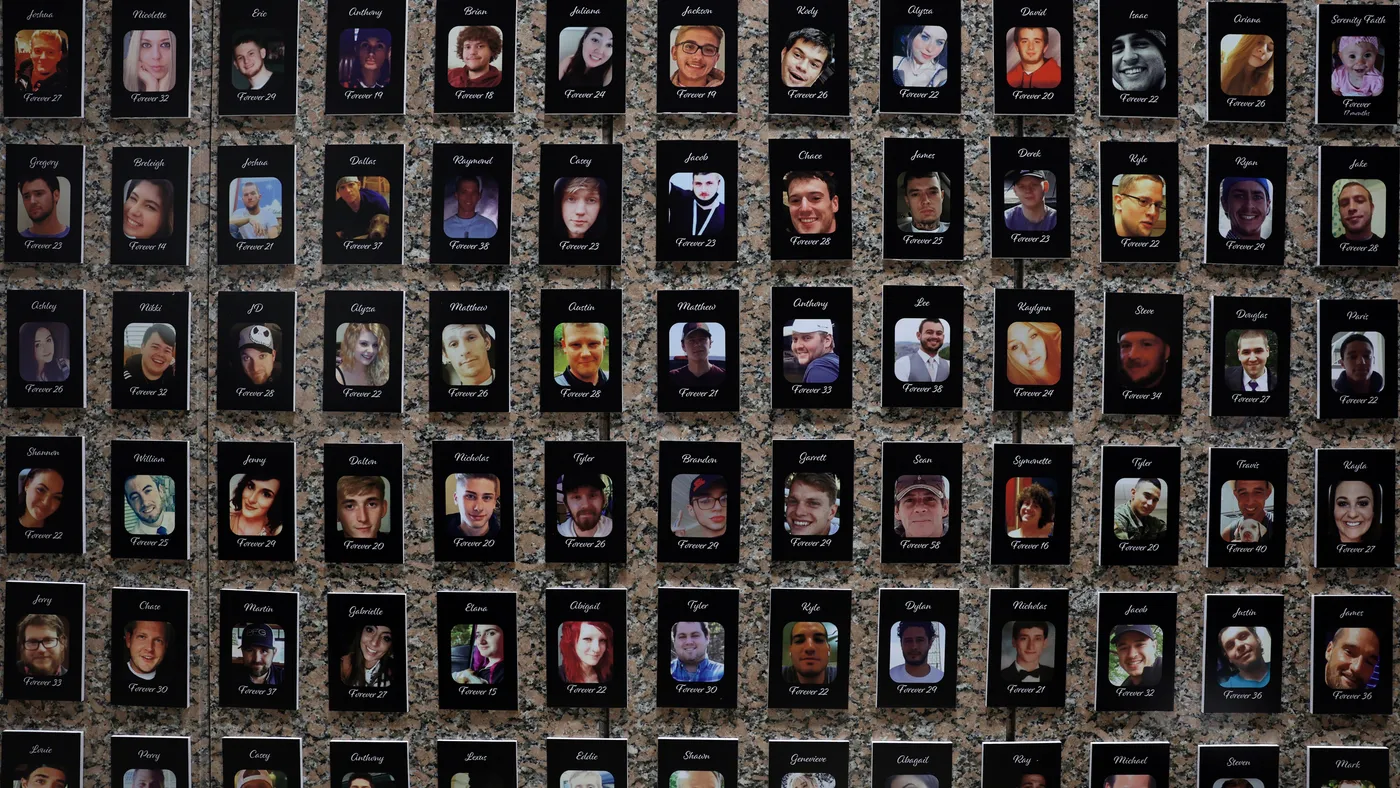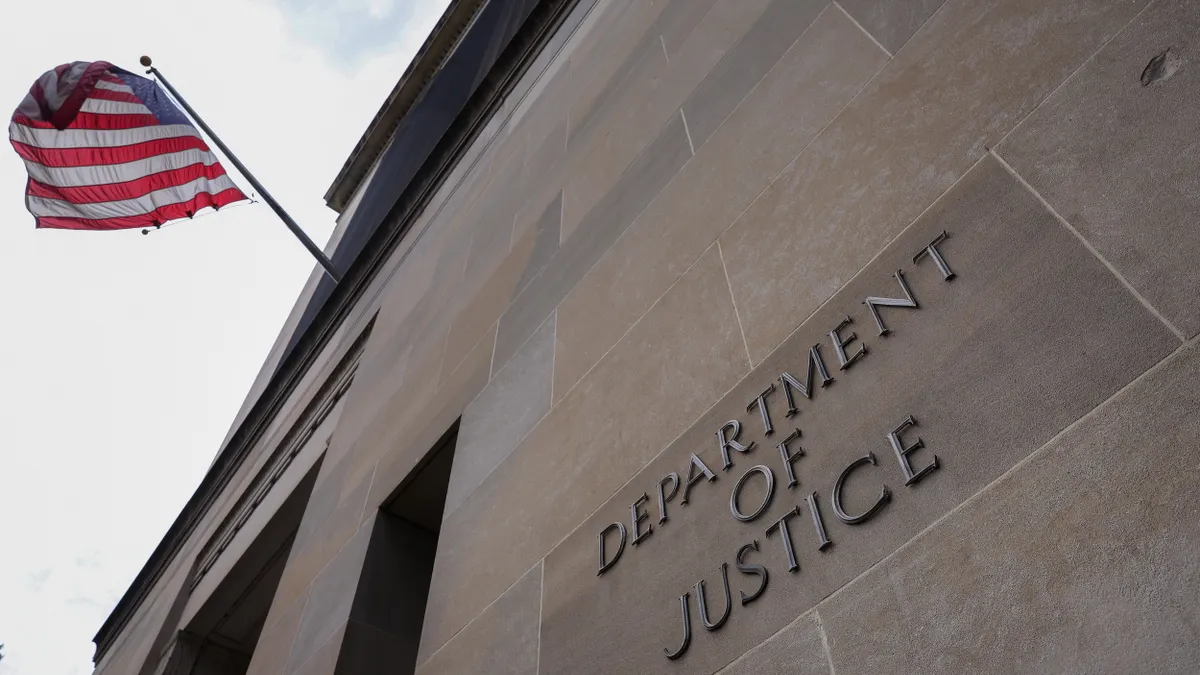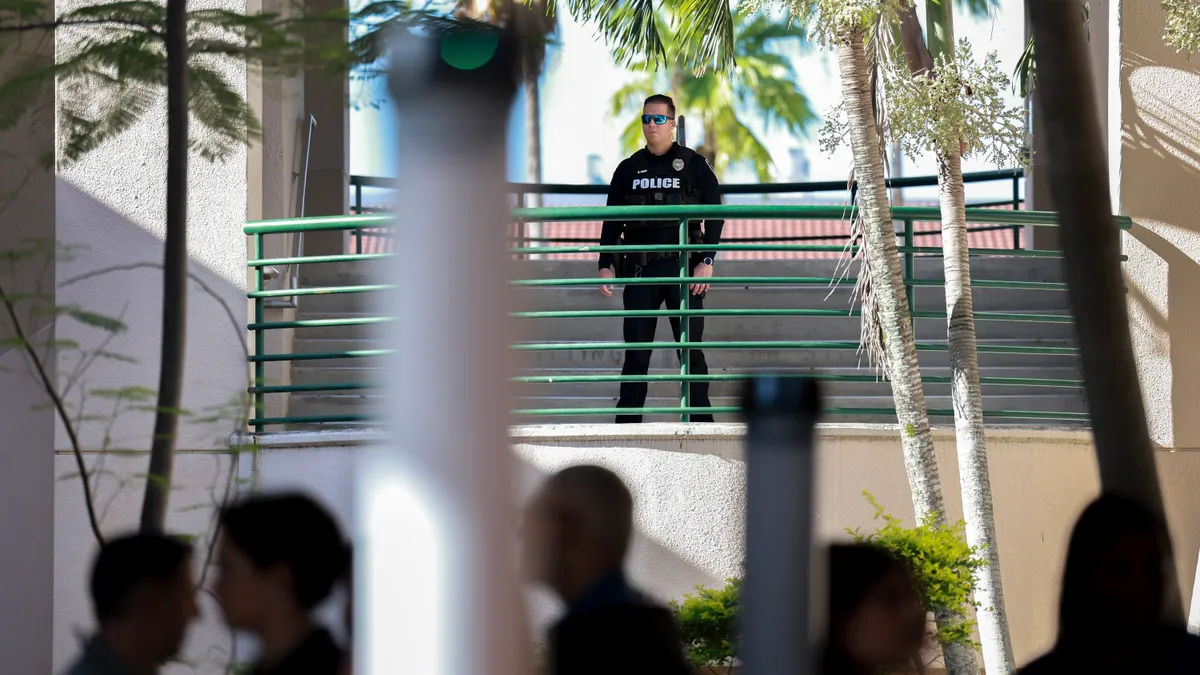When two 8th grade students died within days of each other in 2016 after using synthetic opioids, the Park City School District in Utah went into full crisis response mode.
Grief counselors came to the students' middle school. Parents were asked to search their children's possessions. Area emergency room doctors were warned to look for signs of drug abuse or attempted suicide in teen patients. District and school staff were asked to comfort each other through their grief.
Six years later, the deaths of the young students are still raw, said then-Superintendent Ember Conley.
"All of us that went through that, it changed us forever," said Conley, who left the superintendency and is now an education consultant, as well as a local politics and policy television host in Park City.
The opioid crisis has plagued the nation for the last three decades and will likely impact the education system for years to come. It knows no boundaries as it affects the rich and poor, the young and old, and communities and households in rural, suburban and urban locations.
But even as localities have repeatedly responded to the tragic and heartbreaking loss of lives from overdoses, promising developments have emerged.
Community organizations, local governments and schools are banding together to respond to increasing rates of overdoses, communicate the dangers of opioids and erase the stigma of substance abuse treatment.
Meanwhile in classrooms, educators are using social-emotional learning to strengthen students' self-reliance, coping skills and positive relationships so they are empowered to reject offers of drugs and alcohol and to seek help when they need it.
And in general, schools are taking more trauma-informed approaches of restorative practices, therapy, wraparound services, and treatment — moving away from punitive measures against students suffering with addiction or struggling academically and behaviorally because of addiction in their families.
While these strategies are giving communities hope and, some say, even making a positive difference in teen substance avoidance, there are startling dangers that seem to mock any efforts at progress.
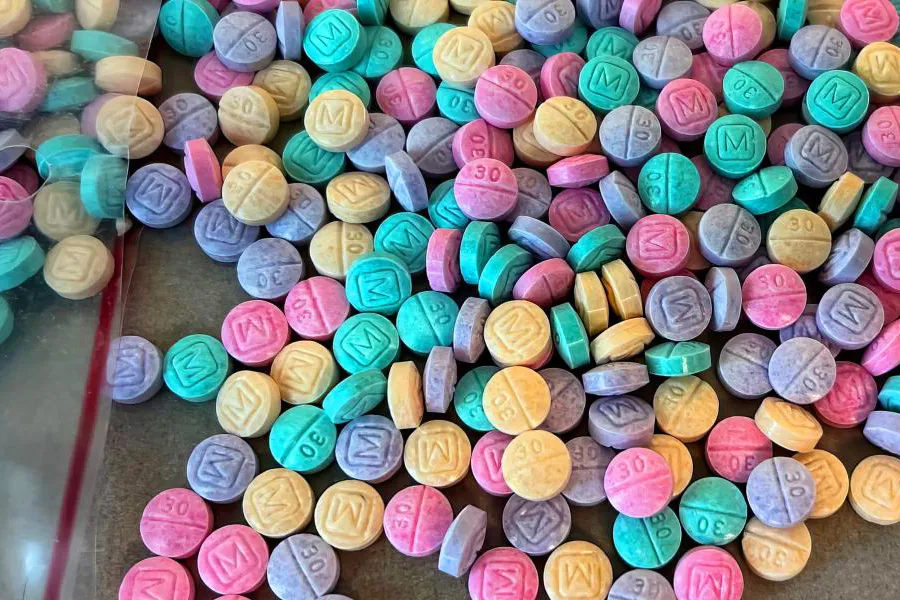
‘Made to look like candy’
The urgent concern is illegal fentanyl, a powerful synthetic opioid that dealers are targeting to youth — some who have never used substances or have no idea they are taking something so deadly.
In late August, the U.S. Drug Enforcement Administration issued a warning about brightly colored fentanyl pills in the U.S. after seizing the pills in 26 states.
"Dubbed 'rainbow fentanyl' in the media, this trend appears to be a new method used by drug cartels to sell highly addictive and potentially deadly fentanyl made to look like candy to children and young people," the DEA warning said. Some say these pills resemble Smarties candy.
The colorful fentanyl is being seized in multiple forms, including pills, powder and blocks that resemble sidewalk chalk. Every color, shape and size of fentanyl should be considered extremely dangerous, the warning said. Fentanyl, developed as a pain treatment for cancer and still prescribed legally for this purpose, is 50 times more potent than heroin and 100 times more potent than morphine.
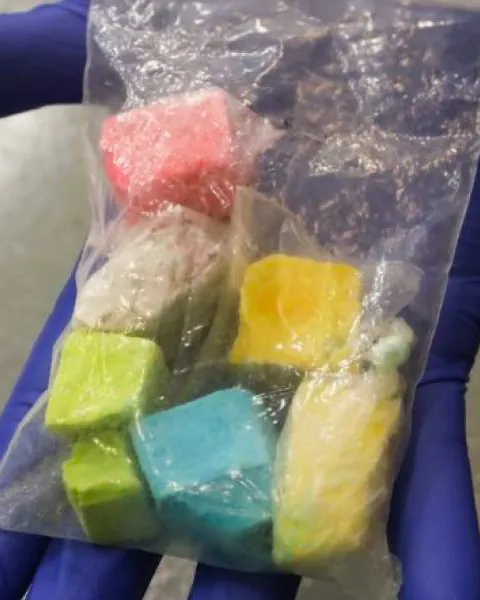
Additionally, according to the DEA, drug networks in Mexico are mass producing fentanyl and fentanyl-laced fake prescription look-alike pills, using chemicals sourced largely from China. These fake pills are designed to appear identical to legitimate prescriptions — such as OxyContin, Percocet, Vicodin, Adderall, Xanax and other medicines — and have been found in every state in the country.
These pills contain inconsistent amounts of fentanyl that can be deadly. The DEA said just 2 milligrams of fentanyl, or the amount that could fit on the tip of a pencil, is considered a potentially lethal dose. What's more, 42% of pills tested contained at least 2 milligrams of fentanyl.
And because fentanyl can be masked within what looks like legitimate pills, many young people may assume what they are taking is not that dangerous, according to law enforcement officials and substance abuse experts. Fentanyl is also being mixed with other illicit drugs like heroin, as well as in vape pens.
Obtaining these illicit pills can be easy for teenagers. Drug networks are marketing illegal fentanyl using social media platforms popular with students, such as TikTok, Instagram and Snapchat, according to the DEA. The DEA's One Pill Can Kill campaign warns about the ease with which young people can buy and obtain synthetic opioids through online channels.
Social media platforms say they are taking steps to remove drug dealers and educate users about the dangers of fentanyl.
The prevalence of the existing threats make it imperative for schools to proactively address substance prevention and abuse even for older elementary students and to take SEL and trauma-informed approaches, said mental health and substance abuse educators and K-12 leaders.
"I see it every day in my practice here in Appalachia, West Virginia, and especially the small town in which I work. Drugs, more specifically opioids, continue to be a huge problem," said Richard Tench, a counselor at Saint Albans High School in West Virginia and a director of the American School Counselor Association.
"I think with my student population, one of the things that worries me most is that our students in this region are being raised as it's the norm. They don't see anything other than this from a young age in their home," Tench said.
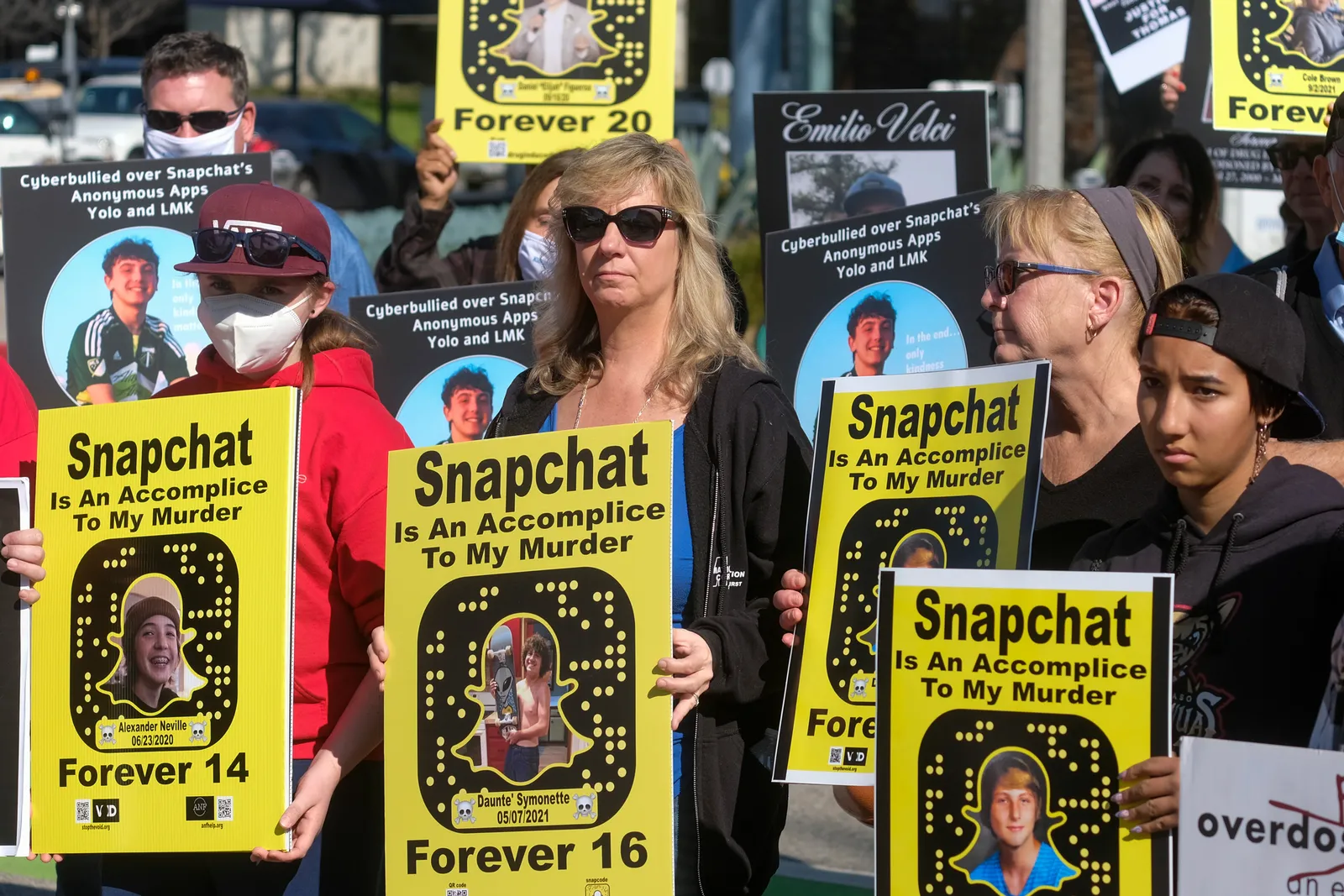
The rise in fentanyl deaths
An increase in illicit fentanyl is the likely driver of teen drug overdose deaths in recent years, according to data from the Centers for Disease Control and Prevention published earlier this year in the Journal of American Medical Association.
Among teens ages 14-18, the CDC data showed a massive 169% increase in deaths from illicit fentanyl and synthetics from 2019 to 2020 and a nearly 30% increase from 2020 to 2021. Teen deaths from prescription opioids, cocaine and heroin, however, decreased from 2020 to 2021.
Illicit fentanyl drastically killed more teens after 2019
The pandemic contributed to increased risk factors for poor mental health and substance use, including social isolation, trauma, and stress for teens, said Kathleen Ethier, director of the Division of Adolescent and School Health at CDC, during a webinar series on youth substance abuse hosted by the U.S. Department of Education on Aug. 24.
In fact, a spring 2021 CDC survey — a year into the pandemic — found one in five high school students reported alcohol use in the 30 days prior. More than one in 10 students said they had used marijuana in the 30 days before the survey. Moreover, one in 10 said they had used illicit drugs at some point in their lives, Ethier said.
The survey also revealed that 9.6% of high schoolers said they had at some point taken prescription pain medicine without a prescription or differently than directed. Nearly 10% said they had been offered, sold or given an illegal drug on school property within the previous 12 months.
The possession and use of drugs and alcohol on school campuses has always been of high concern to school administrators. But the rise in misuse of prescription opioids and use of synthetic opioids has brought those concerns to an urgent level, given fentanyl's wide availability and lethal power.
"Being an educator and going into it for children and making an impact for children, and then losing two of them — I mean, you never get over that loss."

Ember Conley
Former superintendent of Park City School District in Utah
The deaths of students from fentanyl use in Texas, Connecticut, California, Virginia and elsewhere this year have caused districts to increase their emergency response plans. Many schools are now stocking the anti-overdose drug naloxone, which is sprayed into the nostrils or injected under the skin to quickly reverse an opioid overdose.
Having naloxone available on campuses can potentially save lives, just as having automated external defibrillators for people suffering cardiac arrest or epinephrine auto-injectors for people with severe allergic reactions can potentially save lives, said Linda Mendonca, president of the National Association of School Nurses.
"So why wouldn't we have this in our schools?" Mendonca said.
Mendonca said the association doesn't collect information on how often naloxone is used at schools, but the organization does have a naloxone toolkit with resources, sample forms and presentations on planning for emergencies.
Thirty states have statutory language regarding access to naloxone in schools, according to a July report from the Legislative Analysis and Public Policy Association.
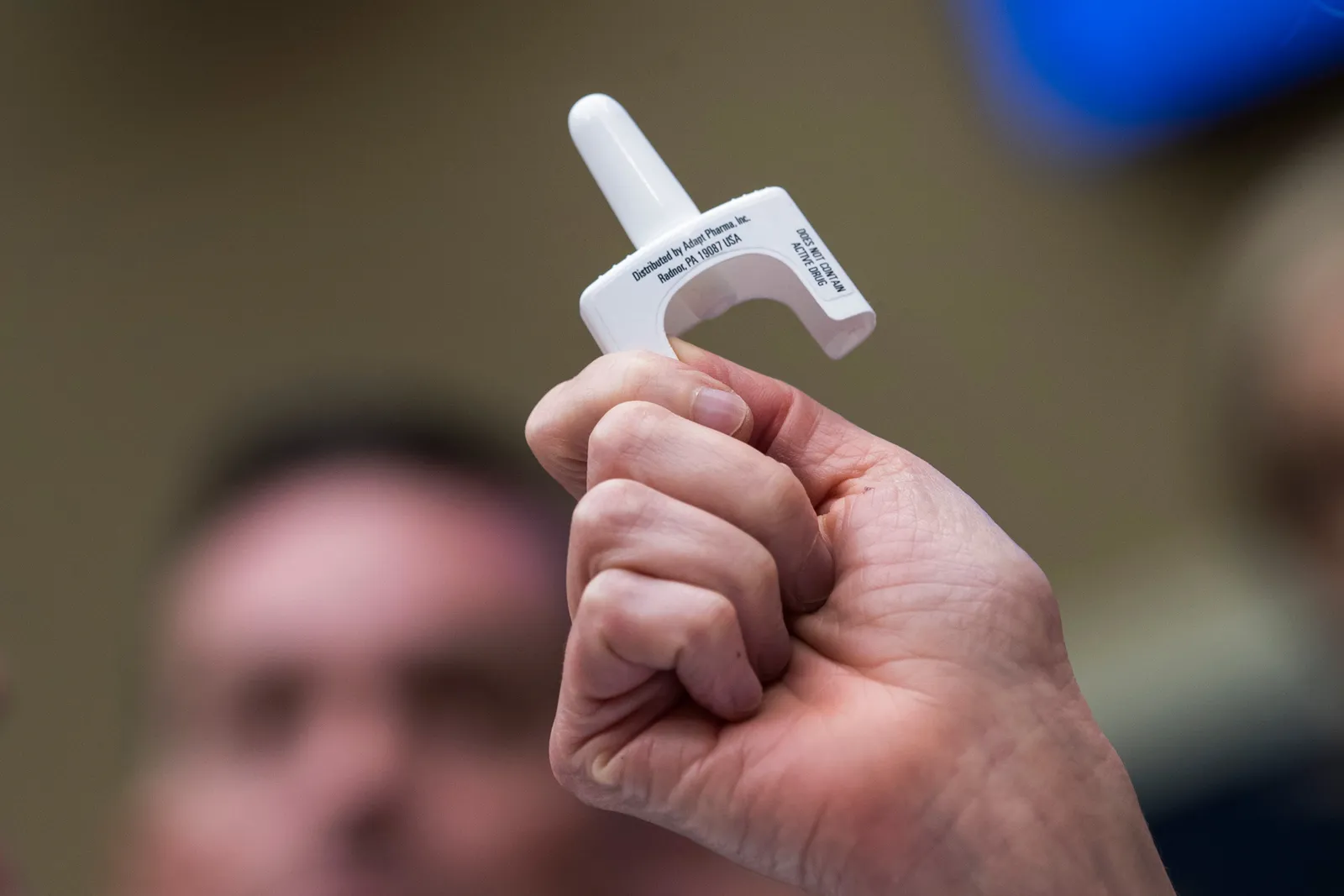
Crisis response in Park City
While schools can stock naloxone to prepare for an overdose emergency, nothing can brace a school community emotionally for when a student dies from taking drugs, said Conley, the former Park City superintendent.
In the affluent and picturesque ski town of Park City, Conley said she knew marijuana use was prevalent — but she was in the dark about synthetic opioids until the death of the first 8th grader in her district. Two days later, another 8th grader, who was that child's friend, died from a fentanyl overdose as well. Both students died while off campus.
Still, educators at both school and district levels immediately began mobilizing by questioning the students' friends and families and warning the community of the drug's dangers. District technology specialists combed the students’ school online accounts, and the district worked with local law enforcement and a DEA task force to better understand how to protect the school community — and more specifically, prevent additional deaths.
At the same time, the district collaborated with a suicide crisis team from nearby Salt Lake City to bring counselors into schools to talk to students. District officials also began identifying students most at risk for suicide or substance abuse.
Those families were contacted by educators and advised to supervise their children and not leave them alone for long periods of time including while they slept. It was also recommended parents take their child's phone and monitor communications. The district also had check-ins from counselors with those families throughout this crisis and provided resources for care in the case families needed support and help.
Many parents rushed to the school to pick up their children upon hearing about the second child's death. Some parents brought in suspicious materials or contacted educators about what their children told them regarding drug activity.
To help organize and document the school and district efforts, including communications and outreach, the district put an official in charge of crisis management. "We were working as fast as a team could work. We were working to try to get ahead of this," said Conley, who likened the response to that for a lockdown or school shooting.
As the immediate crisis response subsided and the community tried to heal, Conley and others in the district and city reflected on how to better protect children from synthetic opioids and other substance abuse.
"As a system, working with our team, working with a community that was so incredibly engaged that we're willing to try new things — we're willing to come to the table and not only to grieve, but [to] say we need to make a systemic change," Conley said.
She pointed specifically to the city's involvement with the Communities That Care program, which brought a research-based framework for focusing on healthy behaviors and strong relationships to prevent youth suicide and substance use.
This collaboration included giving students safe places to gather during school breaks by setting up free movie nights, free ice skating and other activities.
For its part, the district began hosting "Lunch and Learn" sessions that were short youth drug prevention discussions for parents. The district also developed a memorandum of understanding with University of Utah Health Hospital to share information about students in distress so they could receive care from professional healthcare providers, and so the school district could prepare a transition plan for a student's reentry into school after treatment, Conley said.
The district also added mindfulness lessons in the younger grades and adopted the Authentic Strengths curriculum to teach high school students about resilience and empowerment, she said.
Conley left the district in the summer of 2018, nearly two years after the tragedies. Reflecting back, she said she's proud of the actions the district took.
There are regrets, too.
Conley wishes the resiliency training had started years earlier and in the younger grades. She also remains disappointed she couldn't garner support for student drug testing or even to give parents free access to drug tests for their children.
And she's uncertain to this day if every community, school district and family understands fentanyl can kill their children.
"Being an educator and going into it for children and making an impact for children, and then losing two of them — I mean, you never get over that loss," Conley said.
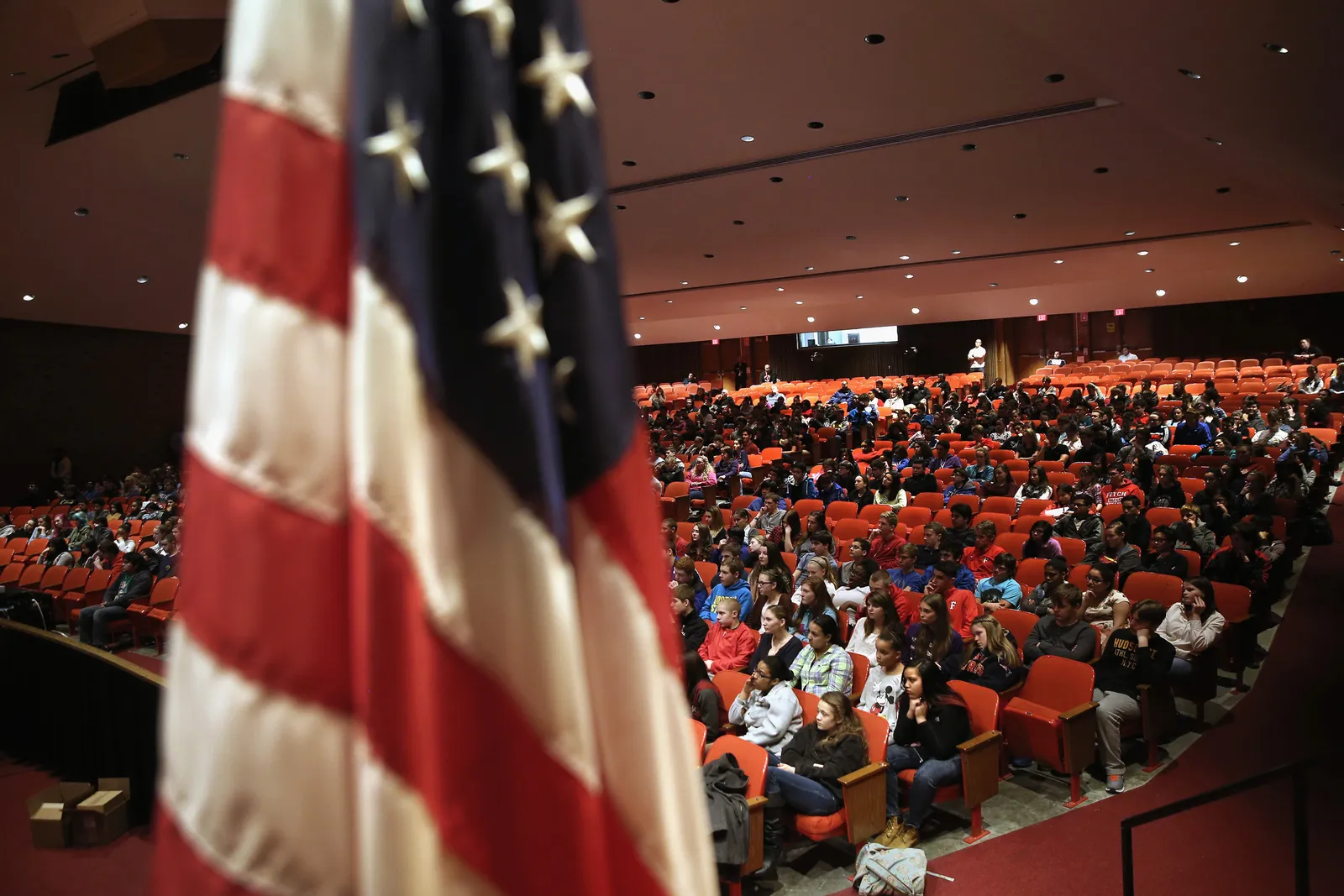
The SEL connection with substance use
While there's no single strategy for addressing youth opioid misuse or substance abuse in general, there are evidence-based approaches that can help prepare youth to reject substance use and other risky behaviors, said Shai Fuxman, a senior research scientist at the Education Development Center, a nonprofit that promotes solutions to improve education, health and economic opportunity.
Teaching all students social-emotional skills for managing stress, forming positive relationships, building emotional awareness and making responsible decisions can lay the foundation for helping students cope with trauma, pain or risky situations, Fuxman said.
"If we can help children, really as young as kindergarten, to manage emotions better, we can eventually graduate students out of high school who are better prepared to manage emotions and therefore less likely to find maladaptive ways of managing emotions, including using substances," Fuxman said.
Research has shown multiple benefits from social-emotional instruction and positive school environments for students, such as increased attendance and academic performance, as well as lower rates of emotional distress, violence, sexual activity and substance abuse.
"We see in the research that with students who have stronger life skills, they're less likely to engage in substance misuse later on."

Karen Thierry
Developmental psychologist and research scientist at Committee for Children
Karen Thierry, a developmental psychologist and research scientist at Committee for Children, has studied how social-emotional learning can be used as a prevention strategy. "SEL programs essentially help to decrease risk factors for problems like substance misuse. And then at the same time, they're also increasing protective factors that are preventing children, adolescents from engaging in substance use in the first place," Thierry said.
There's not one social-emotional lesson or approach that directly addresses substance abuse, because those lessons fall under the SEL umbrella of mental and behavioral health well-being, Thierry said.
"We see in the research that with students who have stronger life skills, they're less likely to engage in substance misuse later on," she said. "SEL includes all those different kinds of skills that really go hand-in-hand."
Beyond the universal approach to teaching social-emotional skills and creating a sense of student belonging is tiered supports for students who need more targeted or individualized counseling, Fuxman said.
This is where school partnerships with community agencies and public health departments are critical, he said, because their mental and behavioral health experts can provide resources to schools and students that are usually beyond a school’s capacity.
One silver lining from the pandemic is a greater awareness and funding for student mental well-being, Fuxman said.
The Bipartisan Safer Communities Act, passed by Congress last summer, dedicates more than $1 billion to expand mental health supports in schools. In a proclamation of October's National Youth Substance Use Prevention Month, President Joe Biden highlighted how the American Rescue Plan provided $4 billion to expand mental health and substance use services and to increase the number of social workers in schools.
Having an organized approach to student mental health screenings, analyzing the results of those screenings and targeting interventions based on data analysis can also further school efforts at combating the opioid crisis and other substance misuse, Fuxman said.
Being explicit about the dangers
Some schools are explicitly teaching about opioid misuse and the dangers of fentanyl as they share local stories of loss and online resources for those who want help with their own substance use or that of a loved one.
To raise awareness about the dangers of buying pills on social media, Oregon's Beaverton School District created a Fake and Fatal campaign in partnership with the Beaverton Police Department, the Washington County Sheriff's Office and the Washington County Public Health Department. In health and advisory classes, the district's middle and high school students get fentanyl-related lessons, and the district posted the teacher's guide and lessons on its website.
The district also produced a video about the death of a former student who died after accidentally using fentanyl, according to his parents' interview in the video.
Students in Texas' Eanes Innovative School District likewise learn about the dangers of drug use — and specifically fentanyl — in their health classes. The district has also posted resources on its website. In Seattle Public Schools, where teen overdose deaths have risen 500% over the past five years, all 7th and 9th graders receive mandatory drug prevention education, including opioid-specific information.
And among various announcements about tutoring activities, parent workshops and calendar events, several schools like California's Menlo-Atherton High School have fentanyl warnings and resources posted on their website homepages. Some schools have shared alerts about synthetic opioids in announcements for homecoming activities and other schoolwide events.
"We as schools can't do it alone. We don't have the manpower. We don't have the money. We don't have all the resources, so it's important to find those professionals and make it work."

Richard Tench
Counselor at Saint Albans High School in West Virginia
In Kanawha County, West Virginia, home to Saint Albans High School, the opioid crisis has gripped the community since the late 1990s. Statewide, opioid use became prevalent due to a multitude of sociocultural factors — a depressed economy, lack of education, and a high rate of opioid prescriptions written — according to a paper published in 2019 in The Health Care Manager. As harrowing as this history is, the experience somewhat prepared the community to respond to the fentanyl crisis, said Tench, the school counselor.
School staff regularly talk with students about the dangers of drug use.
"I think if you don't address it, students will then begin to experiment and not know," Tench said. "I'd rather give them information. I would rather have that open dialogue and provide them, once again, wherever it's developmentally appropriate, 'These are the ramifications of what can happen.'"
"Sometimes having that conversation can be a life changer," he said.
Kanawha County Schools and many mental health practitioners in the area have a memorandum of agreement for referrals and wraparound services, such as housing and food for students and families.
Those partnerships are critical in the school system's efforts to get support for students and families, Tench said. "We as schools can't do it alone. We don't have the manpower. We don't have the money. We don't have all the resources, so it's important to find those professionals and make it work," he said.
The district and local law enforcement also are partners in the Handle With Care program, which has been replicated in other localities across the country.
It is a trauma-informed approach and partnership between a school district and first responders. Under this model, when first responders are called to a scene where a child is present, they contact the child's school, and they tell the school the child's name and that the child had been through a traumatic event, without revealing any other details. School staff know then to be attentive to the child who may need extra support.
All these actions and other efforts can hopefully prevent further loss of lives, Tench said. The death of a student to drug use is awful, he said.
"I can't really describe it any other way. That's just one more reason to prevent it."

